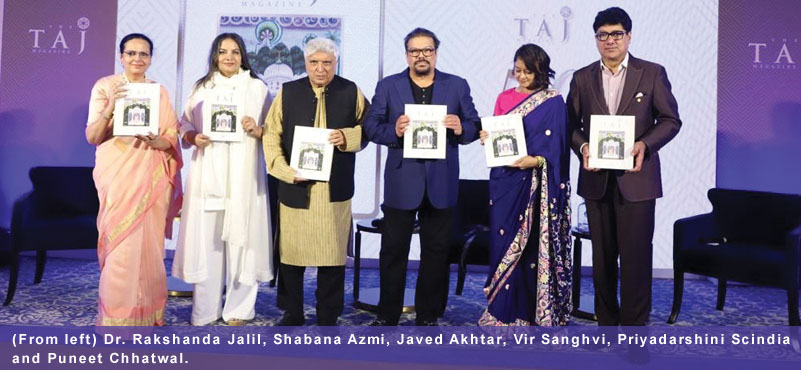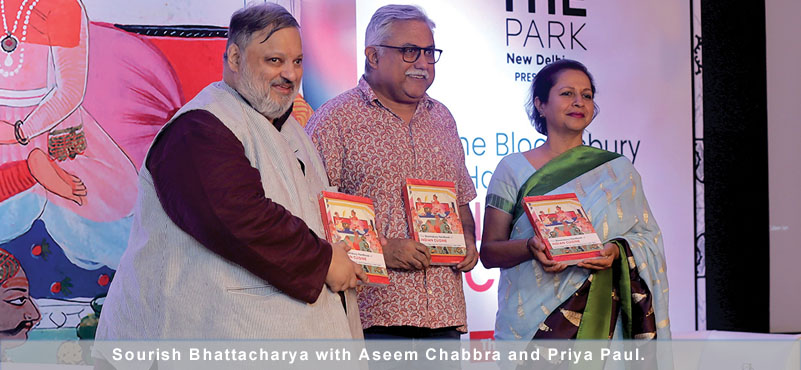Balanced development costs and average rates in the budget accommodation segment is helping investors leverage quality return on their investments, says Rahul Pandit. In an exclusive interview, he shared his opinion on a wide range of issues. Talking about the future course of action for Ginger Hotels, he noted that the idea was to make Ginger the dominant budget lodging brand in the coming years. Excerpts from the interview.

MANAGING DIRECTOR & CEO AT ROOTS CORPORATION LIMITED
How is the budget segment unfolding on a national level? Do you see some trends in the development?
Budget is the most fascinating and rapidly evolving lodging segment in India where a lot of action is happening. Whether one looks at the entry of new players in the segment, the change in consumer mindset or the outlook of investors – it would quickly become apparent that this segment is the poster-child of the hospitality industry.
Consumers are seeing real value in budget hotels as they are realising that with quality hotel partners, they get an excellent lodging experience – from booking the rooms, to check in, to sleep, shower, dining and the check-out experience. On the other hand, this segment is seeing the active interest and participation not only of traditional hospitality companies but also the new-tech aggregators and travel booking companies. There is currently a lot of capital being burnt by earnest investors and while this hurts the business in the short term, as the sector matures we shall see those with firm roots still being around while others will go for a trip.
Most importantly, this sector is the most interesting for those who are looking for quality returns on their investments. The budget category of hotels are the ones which are rationally priced in both development costs and average rates and therefore qualify to give great returns for investors. We are seeing first time owners as well as large developers and institutions looking at investing into this sector. Demonetisation has surely dampened the investment sentiment but it seems like a short-term phenomenon. As RevPARs increase, we expect to witness more investment flowing through into the sector.
We see the mobile phone and internet become the most important channel for distribution for our segment of hotels. The internet users in India have increased by 40% over last year and at 355 million users, it is second only to China. With the government pushing for digital-focused policies such as Jan Dhan Yojana, GST, demonetisation and others this will only accelerate.
We are seeing leisure hold renewed development interest on the back of superior, sustained margins across the country.
The GST is likely to be rolled out soon. What are your first reactions on the govt.’s decision of differential tax slab rates? How do you see it impacting your business? Some industry insiders have voiced their concerns, demanding a fixed slab of 18%. Do you agree with the idea?
Any policy for the sector should contribute to increased employment, higher foreign exchange earnings and widening of the structured market besides increasing the tax kitty.
While India received only 9 million visitors last year, the city state of Singapore received 16 million, Hong Kong 26 million, Thailand 33 million and Malaysia is targeting 31 million visitors this year. All these neighbours use tourism as a key policy tool to create jobs and promote the industry and the economy. The GST in these countries is in single digits with Hong Kong at 0%.
Most progressive economies treat the hotel sector as an essential item of the economic infrastructure – important for business. If India has to really unleash the potential of the tourism to create jobs, attract its fair share of visitors and encourage widening of the tax base, it has to be enabled by a favourable single digit GST and according lending to hotel projects at infrastructure rates.
We understand that you are going to add 10000 rooms in the next five years. Where will this expansion happen? In leisure segment or MICE and corporate travel? In terms of destinations, which region will be your focus area?
Ginger pioneered budget lodging in India. Our strategy is very simple – we want to profitably expand to all pin codes in India where our customers are. We aim to make Ginger the dominant budget lodging brand of choice for customers, developers and employees that delivers superior returns to shareholders and positively impacts society.
We want to fan out across the country to serve both business and leisure demand, including being present at pilgrimage destinations. The majority of our current portfolio is in business cites, however leisure would now feature prominently in bulk of new supply additions to the brand. Besides the key metros and leisure locations, we have identified 12 domestic demand dense regional circuits for Ginger to cater to.
How well are your hotels doing in leisure destinations? What are some trends there in?
The leisure demand across the country is rising with Goa being the most popular destination. The demand for our leisure hotels portfolio has grown by 11% in comparison to LY for the first 2 months of the FY. With the ensuing holiday season, we expect the same pick-up further. Also, given a much higher B2C share and contribution from proprietary channels, leisure is much more margin accretive.
At a time when home-grown and international OTAs are trying to bring in standardization, offering rooms at heavily-discounted prices, how do you see the competition on the rate front?
The Indian consumer is smart and values the brand’s ability to consistently deliver a reliable experience, with the table stakes of safety and hygiene in place. Besides these table stakes, Ginger delivers on the assured essentials of Bed – a relaxing sleep experience, Bath – a rejuvenating shower, Breakfast – a hearty breakfast and Broadband – seamless WiFi. We want to deliver and retain customers for value, not use discounts as a one size fits all tactic for acquisition. Besides being margin decretive, such tactics can also lead to dissonance with the target psychographic. Subsidizing customer acquisition by discounts is a temporary phenomenon, not sustainable in the long run.
This is pertaining to the Noida market. It has been one of the worst performing markets in India, with low occupancy rates. You have a sizable inventory in Noida. Perhaps, one of the most formidable. Why is the Noida market in shambles? How will the Noida market improve? What is holding it back?
Noida has recently witnessed addition of 300 new rooms to the existing supply. The market has witnessed a decline in the share of business from the IT and ITES segments. Though the rates reflect this stress, we have however seen a demand recovery on the back of demand growth from both manufacturing and energy. Noida has been an attractive market, since the past 5-6 years, and we expect it to continue being attractive in the foreseeable future too.
The Greater Noida market however continues to be in turmoil. This is a combination of the market not developing into a large commercial hub like Gurgaon, while the supply quickly outpaced demand.
We hope that with the new government in power, the development of the proposed international airport at Jewar will bring balance back into the market.




































